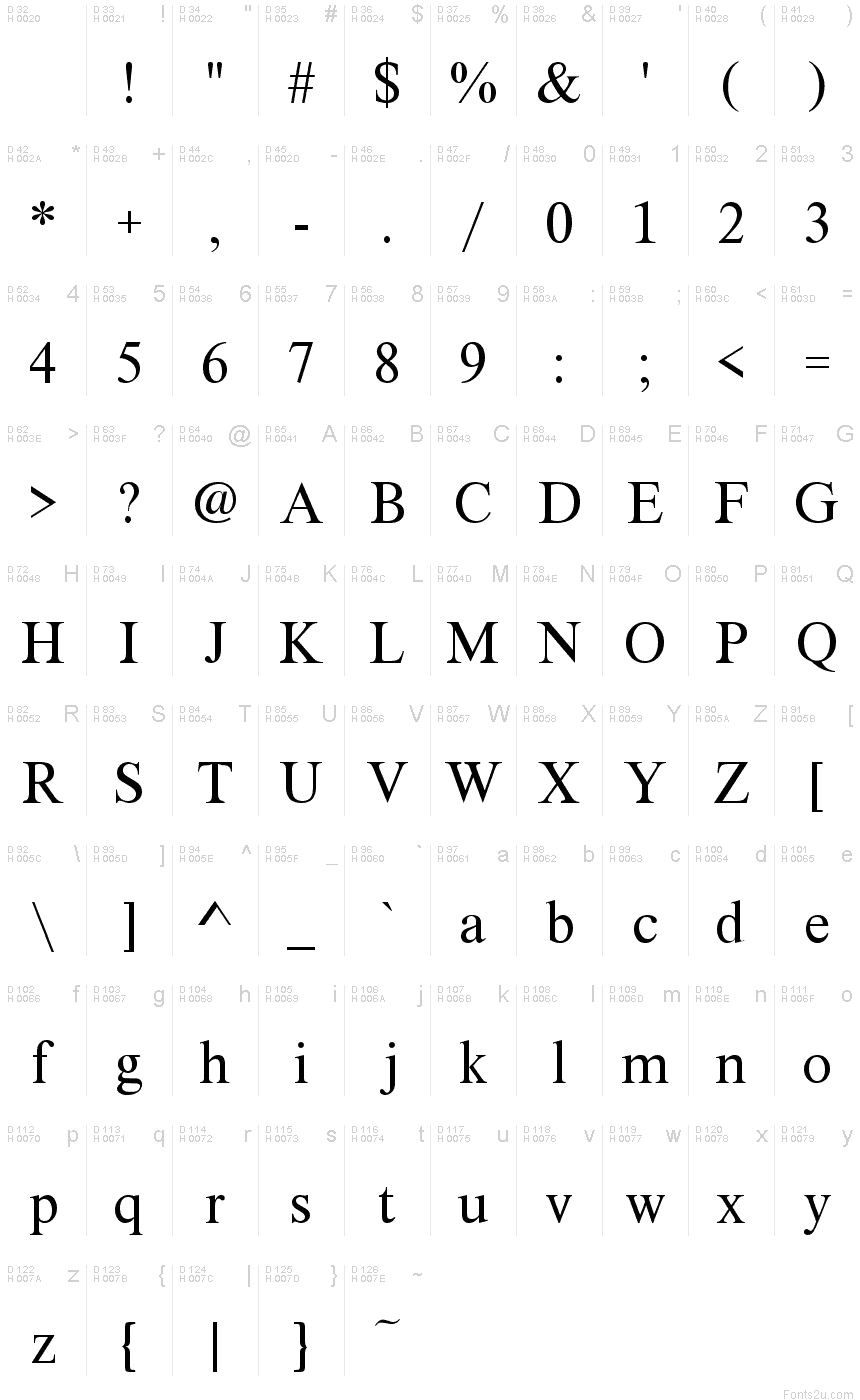XSerif Unicode
TrueTypePersonal use
- Accents (partial)
- Accents (full)
xsuni.ttf
Tags
Character map
Please use the pulldown menu to view different character maps contained in this font.

Basic font information
Copyright notice
(c) Ch. Singer 1997. Use Font Property Extension to read License table.
Font family
XSerif Unicode
Font subfamily
Regular
Unique subfamily identification
DTP- XSerif Unicode Version 1
Full font name
XSerif Unicode
Name table version
Version 1.00
Postscript font name
XSerifUnicode
Trademark notice
Created by Type-Designer 3.0
Manufacturer name
Description
In addition to the codepages mentioned in "Charset/Unicode" table, this font contains Old Russian characters (Yat', Fita, Izhitsa) and combining diacritical marks with it's right UNICODE numbers.
There are also further characters used by Trediakovskij in 18 century and some characters for transliteration in user defined UNICODE area.
You can use these characters only if you have a UNICODE-based text processor (e.g. MS Word 97).
XSerif Typeface
When I wanted to create some special fonts for students of slavistics (e. g. for transliteration an Old Russian) I looked for a font with a "Times®"-like typeface that I could use as a base for my new fonts. But I found that all quality fonts are copyrighted and the quality of free and public domain fonts on Internet didn't please me, so I decided to create a new font with a slightly changed "Times®"-like typeface that I called "XSerif". Most common letters as "A" or "H" probably look like they do in every similar typeface, except slightly different poportions, serifs and weight, but some letters as cyrillic "zh" or cyrillic "l" are originally designed because I didn't like their shape in other "Times®"-like typefaces.
There is only Regular typeface existing at this time.
If you are looking for a base font to create fonts containig special characters you can use XSerif fonts under the two conditions described in "License" table.
There are also further characters used by Trediakovskij in 18 century and some characters for transliteration in user defined UNICODE area.
You can use these characters only if you have a UNICODE-based text processor (e.g. MS Word 97).
XSerif Typeface
When I wanted to create some special fonts for students of slavistics (e. g. for transliteration an Old Russian) I looked for a font with a "Times®"-like typeface that I could use as a base for my new fonts. But I found that all quality fonts are copyrighted and the quality of free and public domain fonts on Internet didn't please me, so I decided to create a new font with a slightly changed "Times®"-like typeface that I called "XSerif". Most common letters as "A" or "H" probably look like they do in every similar typeface, except slightly different poportions, serifs and weight, but some letters as cyrillic "zh" or cyrillic "l" are originally designed because I didn't like their shape in other "Times®"-like typefaces.
There is only Regular typeface existing at this time.
If you are looking for a base font to create fonts containig special characters you can use XSerif fonts under the two conditions described in "License" table.
Extended font information
Platforms supported
PlatformEncoding
MicrosoftUnicode BMP only
MacintoshRoman
UnicodeUnicode 1.0 semantics
Font details
Created1998-04-09
Revision1
Glyph count463
Units per Em2048
Embedding rightsEmbedding for permanent installation
Family classFreeform serifs
WeightSemi-light
WidthMedium (normal)
Width typeNormal
Mac styleBold
DirectionOnly strongly left to right glyphs
Pattern natureRegular
PostureUpright
Stroke weightBook, text, regular, etc.
PitchNot monospaced